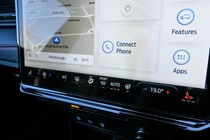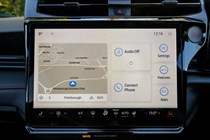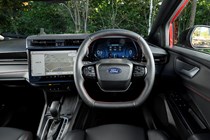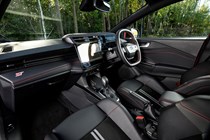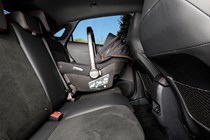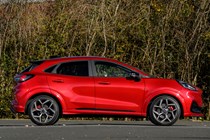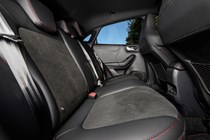Ford Puma ST review
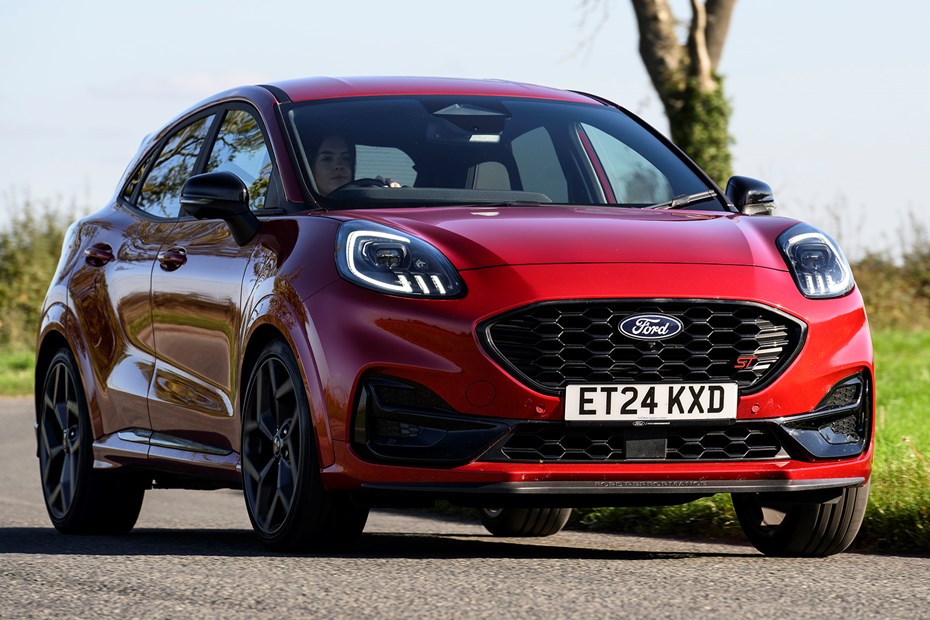
At a glance
| Price new | £33,880 - £34,930 |
|---|---|
| Used prices | £13,136 - £31,248 |
| Road tax cost | £195 |
| Insurance group | 21 - 22 |
Get an insurance quote with

|
|
| Fuel economy | 42.8 - 47.9 mpg |
| Miles per pound | 6.3 - 7.0 |
| Number of doors | 5 |
| View full specs for a specific version | |
Available fuel types
Petrol
Pros & cons
- Class-leading handling
- Retains the Puma’s practicality, including the big boot
- Better fuel efficiency than before
- The automatic gearbox saps some of the fun
- Interior is dark and dull
- Harsh, unforgiving suspension
Ford Puma ST rivals
Overview
The Ford Puma ST is the final bastion of the small fast Ford. With the discontinuation of the Fiesta ST in 2023, the Puma soldiers on as the brand’s sole small blue-collar performance hero. The pre-facelift car, with its charismatic 1.5-litre engine, balanced steering and manual gearbox, proved a small crossover could be fun.
It also had a bigger boot and enhanced practicality compared to a Fiesta. In short it helped mature the ST nameplate – and we rated it highly. So highly, in fact, that we’ve made the Puma a multi-time Small Family Car of the Year award winner here at Parkers.
When the Puma was updated for 2024, we had high hopes. But there have been two major casualties with the refreshed ST. It’s now 1.0-litre mild-hybrid only and the manual gearbox is gone, replaced with a Powershift automatic. And that spoils it.
A regular Puma counts the Skoda Kamiq and Renault Captur as rivals in the bustling small crossover sector. The ST is too performance orientated for any of these, however. The Hyundai Kona N was its most obvious rival but is now gone. So, you’ll be looking at larger performance SUVs like the Cupra Formentor and Volkswagen T-Roc R as an ST rival.
What’s it like inside?
A bit drab to be blunt. The previous Puma’s interior was never a bobby-dazzler, but the revised look is more streamlined and now wall-to-wall black plastic. There’s a vein of red stitching and an ST logo, but these don’t lift the Puma out of dreary territory.
There are two big updates to the inside of the Puma – a new infotainment system running Ford Sync 4 software, and a new-style steering wheel.

The move to this new 12.0-inch unit hasn’t been a seamless integration, as it sticks out of the dashboard like a bad Dorma bungalow conversion. The screen is at least bright, easy to read and quick to navigate. It’s a pity that almost all functions rest within it, including the climate controls.
It also has a massive square steering wheel, like you’d find in the Transit van. It’s not very nice to use, from city streets to the twisties. It resembles a pipe wrapped in leather, and it’s jarring to use without continuous hand shuffling.
The bucket seats are supportive while remaining comfortable. They also have six-way adjustment and provide a good choice of seating positions. You sit higher than in a supermini, but still lower than you would in a small SUV. They don’t eat as much rear legroom as you’d expect but the back is still best reserved for children.
Boot space remains the same as a regular Puma, which is a good thing. It’s bigger than most crossovers, plus it has Ford’s Megabox system, essentially an 80-litre extra boot under the boot floor with a plug hole in the bottom so you can store wet items or even fill it with ice and water to create a makeshift fridge.
What’s it like to drive?
The old Puma, like the Fiesta ST, was in its element on a twisty road. The steering is more responsive than the standard Puma’s and it makes the ST fun to play with. That fun factor is carried over to the new one, and the steering is still a highlight. It remains nice and weighted, offering great feedback through the ridiculously large and misshapen steering wheel.
Handling is still excellent, it uses the subtle chassis tweaks and the ST-tuned suspension to full effect. The Puma has a flypaper like ability to stick to a road which, when partnered with the minimal body roll, helps instil a great deal of confidence, even after a short amount of time behind the wheel.

The bad news is that the Puma’s ride suffers from these sporty adjustments. This is most notable at town speeds. At 20-30 mph it drops hard into potholes and bangs over speed bumps. This is irritating and should be taken into consideration if you regularly do short trips around urban areas. It becomes more palatable at higher speeds.
The 1.0-litre mild-hybrid engine has been available on the Puma ST since 2023 and is unchanged for the facelift. It has the same power as before at 170hp (30 less than the 1.5-litre) and the same 7.4 seconds 0-62mph time (0.7 seconds slower than the old manual).
In short, it’s a step down from Hot to Lemon & Herb. It still burbles (from inside the car anyway) and it’s slightly more fuel efficient than before. Ford claim 47.1mpg from the new Puma against 41.5mpg for the old manual example and we found similar on test. The powertrain is just that little bit softer now.
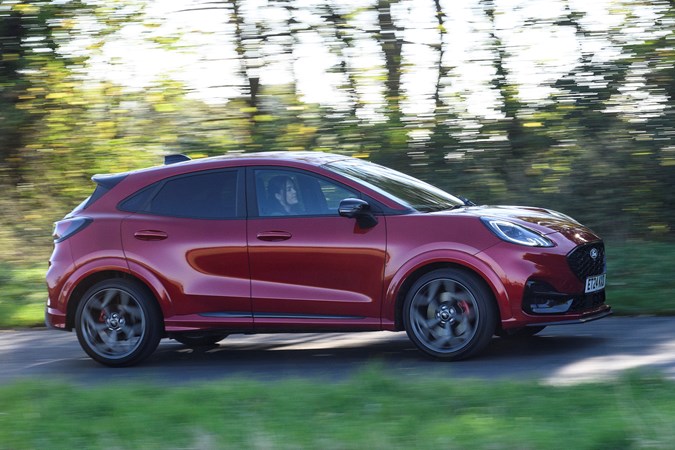
The automatic gearbox isn’t intrinsically bad. In fact, it’s fairly smooth under normal driving conditions. It also hides the car’s mild hybrid assistance well. However, it dulls the pep the ST once had, and the very concept of an auto-only hot Ford enrages the Fast Ford brigade.
Paddle shifters on the steering wheel help make the gearbox more engaging to drive, but you get a degree of delay and separation that stops it from being the analogue driver’s car it was before.
What models and trims are available?
The ST sits in a class of one, with no trim, engine or gearbox choices. What you see is what you get.
The only option that’ll massively alter the car is the ST Handling Pack. This adds different 19-inch alloy wheels, KW coilover suspension and a round steering wheel, along with light-up scuff plates and a black roof. We haven’t driven an example fitted with this kit, but the lure of a proper steering wheel would happily be worth the extra £1,050 for us.





